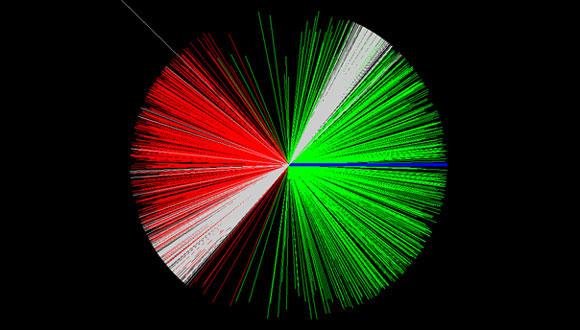Joint Seminar in Nuclear Physics
Dedicated to the 80th anniversary of Professor Murray Moinester
PROGRAM
14:30 - 14:45 Refreshments
14:45 - 15:45 Pion Polarizability Status Report, Murray Moinesterת TAU
Abstract:
Polarizabilities are well known as associated with the Rayleigh scattering cross section of sunlight photons on atomic electrons in atmospheric N2 and O2. The oscillating electric field of sunlight photons forces the atomic electrons to vibrate. Since the radiated power associated with their changing electric dipole moments depends on λ-4, the intensity of scattered and transmitted sunlight is dominated by blue and red, respectively.
Similarly, the electric απ and magnetic βπ charged and neutral pion polarizabilities characterize the induced dipole moments of the pion during γπ Compton scattering via the interaction of the γ’s electromagnetic field with the quark substructure of the pion. In particular, απ is the proportionality constant between the γ’s electric field and the electric dipole moment, while βπ is similarly related to the γ’s magnetic field and the induced magnetic dipole moment. Pion polarizabilities affect the shape of the γπ Compton scattering angular distribution. By crossing symmetry, the γπ→γπ amplitudes are related to the γγ→ππ amplitudes. The polarizabilities are basic characteristics of the pion, and are therefore of fundamental interest in the low-energy sector of quantum chromodynamics.
A stringent test of chiral perturbation theory (ChPT) is possible based on comparisons of precision experimental pion polarizabilities with ChPT predictions. The combination (απ-βπ) has been measured by: (1) radiative pion Primakoff scattering (Bremsstrahlung of 190 GeV/c negative pions) in the nuclear Coulomb field of the Ni nucleus: π- Ni → π- Ni γ, (2) two-photon fusion production of pion pairs γγ→ππ via the e+e− → e+e−π+π− reaction at SLAC Mark-II, (3) radiative pion photoproduction from the proton γp→ γπn at MAMI in Mainz. Only the CERN COMPASS charged pion polarizability measurement has acceptably small uncertainties. The COMPASS polarizabilities are in good agreement with ChPT predictions; and by Dispersion Relations with DESY Crystal Ball γγ → π0π0 data; strengthening the identification of the pion with the Goldstone boson of chiral symmetry breaking in QCD. This status report follows the 2019 IJMPA review by Moinester and Scherer at https://arxiv.org/pdf/1905.05640.pdf Links to the relevant polarizability articles are conveniently available at https://murraymoinester.com
15:45 - 16:15 Coffee Break
16:15 - 17:15 Isotopic Techniques in Geophysics: Applications to Carbon Sequestration, Climate Chronometers, and Health Physics, Joel Kronfeld, TAU
Abstract:
Increasing atmospheric CO2 levels may affect climate and/or oceanic acidification. Based on Yatir forest data, we determined the carbon sequestration potential under global semi-arid forests. Using 13C and 14C isotopes, we traced the path of atmospheric CO2 into the soil-gas (via root exhalation). The CO2 subsequently dissolves into soil water, and then precipitates as a carbonate mineral (calcite). Unlike temperate regions, the calcite in the unsaturated zone does not re-dissolve in low rainfall semi-arid regions, thus providing long term sequestration. Semi-arid soils under forested areas may comprise an important and previously unrecognized sink for atmospheric carbon. The total carbon sequestration rate in global semi-arid forests (to be planted) could represent ~25% of rate of the annual atmospheric CO2 increase.
An example of extreme climate change is recorded in Israel's own backyard. Sediments representative of fresh water lakes in the now hyper-arid Arava Valley and raised coral reefs terraces along the Gulf of Eilat are dated by 238U-series disequilibria methods for the period of the past 300,000 years. In both cases, a cyclic increase in rainfall and high sea levels is noted to occur in tandem during warm climatic periods, related to perturbations in Earth's orbital parameters.
Negev phosphorites, rich in uranium, are used to make commercial phosphate fertilizer, around 4 million tons per year. The phosphorite deposits (averaging approximately 140 ppm uranium) can be considered a potential low grade uranium ore. The uranium and its daughters are added by way of phosphate fertilization to Israeli farmland. Millions of tons of PhosphoGypsum (PG) waste product from fertilizer production, rich in various radioactive daughter nuclides, are stored on land in giant stacks. We evaluate the potential environmental dangers of using soluble uranium-laden phosphate fertilizers and of stacking PG stacks.
17:30 - 18:30 Reception


